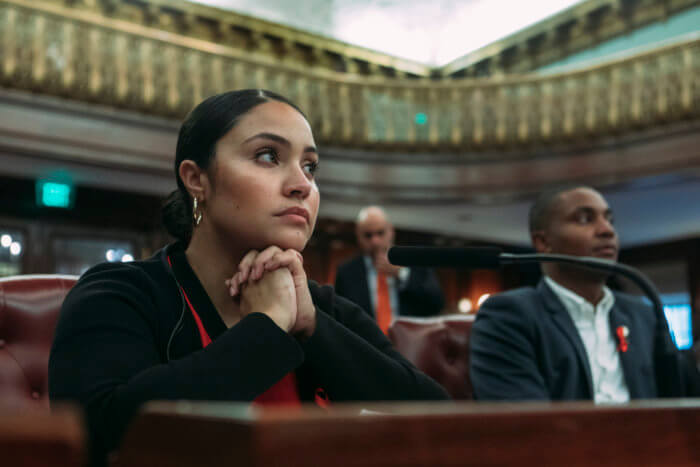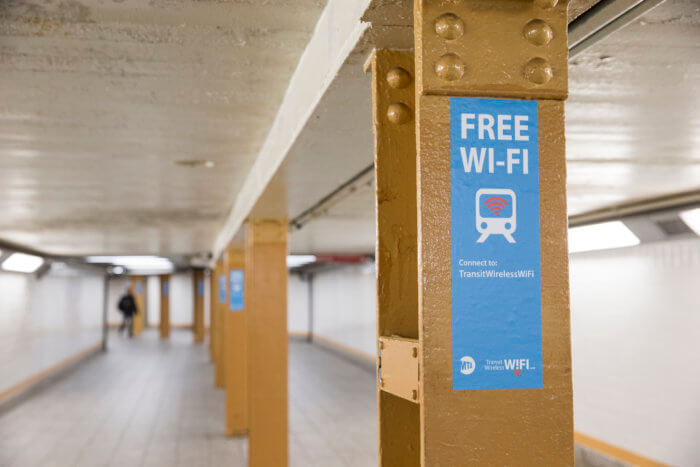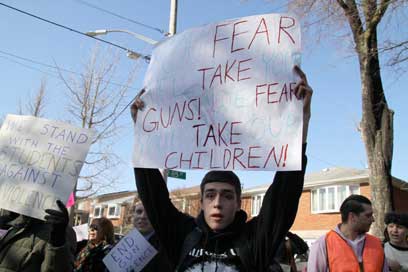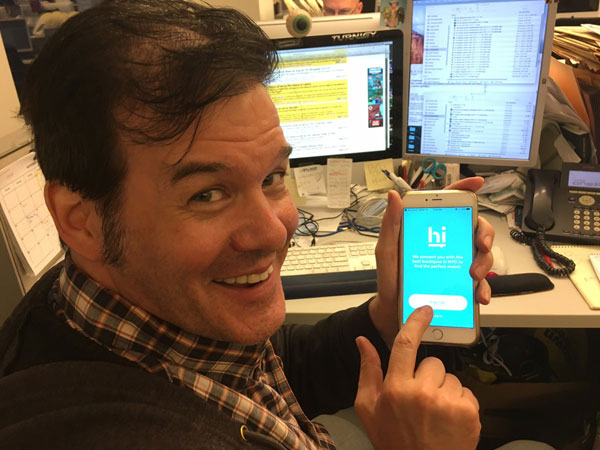The Metropolitan Transportation Authority’s money-saving move to cut off free Wi-Fi services on New York City’s fleet of buses last month was done without proper discussion, according to the chair of the City Council’s Committee on Technology.
Council Member Jennifer Gutiérrez criticized the MTA’s discontinuation, which came into effect on Jan. 14, for not taking into account that the routes with the highest Wi-Fi use that predominantly serve communities of color and lower income households.
The fiscally-troubled authority said scant usage by straphangers prompted the cut-off, which will save it $3.3 million annually. A recent audit found that just 1.5% of local bus passengers and 4.5% of express bus passengers were using the free wireless internet service on board. Of the 4,266 internet-friendly buses, the agency said it recorded an average of 33,000 daily logins to the network compared to an average weekday ridership of some 2.34 million people. Data from the same survey, conducted last October, showed 2,800 daily logins on express buses, which had an average ridership of 59,000.
Gutiérrez said the unplugging felt like a “very quick swipe” that was made without understanding who was making use of the Wi-Fi or why they needed it.

“I was severely disappointed. I would have wanted way more of a conversation from the MTA, and maybe they could have prioritized maintaining those routes,” Gutiérrez told Brooklyn Paper. “This was not something anybody had asked for. There are a myriad of reasons why people are utilizing the Wi-Fi network. It could be a student on their way to school looking something up. It could also be someone looking up their next bus schedule. They could be small things, but they can be things that really change and impact a person’s quality of life and I just don’t think that it’s the MTA’s responsibility to strip that from a person.”
The Brooklyn bus routes with the highest usage rates included the B35, running from Brownsville to Sunset Park; the B6, serving Bensonhurst to East New York; the B15 route from Bedford-Stuyvesant to JFK; and the B46, running from Kings Plaza to Williamsburg.
Services in Queens and the Bronx also saw high passenger usage on the Bx36, Bx19, Q44, Bx12 and Bx35.
Digital divide
The discontinuation of Wi-Fi on the city’s buses was the authorities attempt at “trying to fill up a hole” in its budget deficit, according to Gutiérrez, adding that she would like to see more data to prove that was the penny pinching measure was a “fiscally responsible decision”.
“Why not start somewhere else? If you’re the MTA, why start with the Wi-Fi on buses that go directly to these communities? I’m just not sure that thought process was there,” she said. “As this administration systematically defunds libraries, schools, and community spaces through which people can access the internet, it’s disheartening to see yet another access point taken away.”
The disconnect comes as the MTA’s $19.2 billion austerity budget faces a $600 million deficit this year without new revenue, even accounting for the cost-cutting and fare hikes. Despite this, the cash-strapped transit authority intends to fire ahead with plans to install cell service throughout the subway system, allowing commuters to use the internet and send texts even in an underground tunnel.
Wi-Fi is also set to be installed at above-ground subway stations, bringing wireless internet to all 472 stations in the system. The MTA inked a $600 million contract with Transit Wireless for the undertaking.

Many of the communities served by the bus routes with the highest Wi-Fi usage have some of the lowest internet connectivity rates in NYC. It’s estimated that almost 15% of New Yorkers have no access to broadband internet of any kind at home and about 24.2% do not have a desktop or laptop computer in their household.
Poor New Yorkers, older adults, and communities of color had the lowest adoption rates of digital tools, according to a 2022 report from the Community Services Society. One-third of African American and Latino households surveyed did not have broadband internet at home while a similar number reported not having a desktop or laptop computer.
Efforts have been made to address the digital divide in recent years, including Mayor Eric Adams’ Big Apple Connect initiative, which aims to get every NYCHA resident online.
It’s currently estimated that 30% to 40% of tenants in the public housing system don’t have broadband access. As part of the program, the city gives each NYCHA tenant a bundle with free internet, basic cable along with Wi-Fi in building common areas. The Office of Technology and Innovation is then billed directly by cable providers participating in the program on residents’ behalf.
Adams’ predecessor Bill de Blasio also worked to get more New Yorkers online by introducing the Internet Master Plan, which would have increased free public internet dramatically.






















